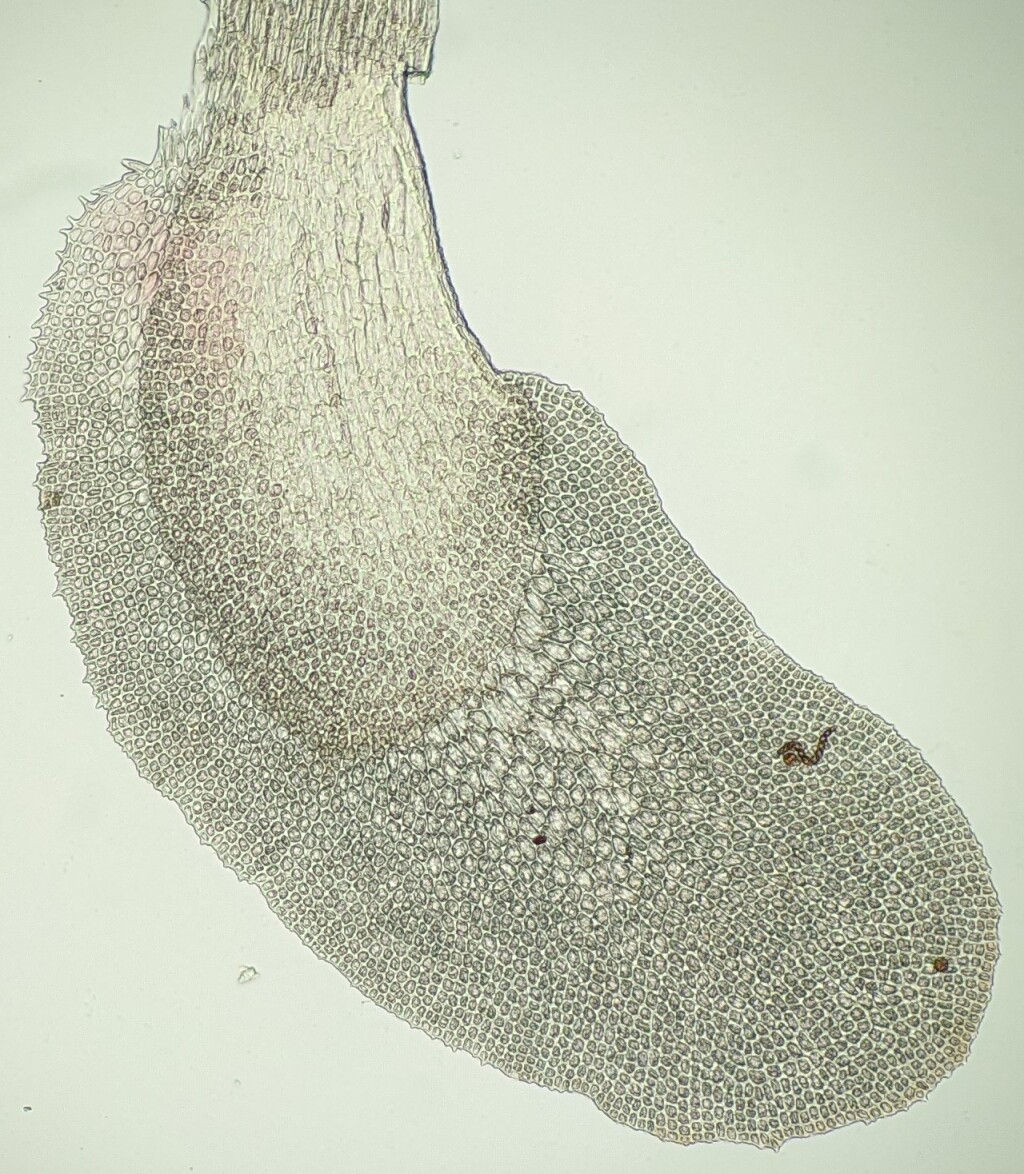Diplophyllum
Terrestrial or lithophytic, autoicous (not in Victoria), paroicous or dioicous (not in Victoria). Asexual reproduction by 1–2-celled gemmae formed in chains from margins and surfaces (not in Victoria) of leaves near stem apex. Stems erect or prostrate, sparingly branched, with two ranks of lateral leaves; branches emerging from main stem from the axil of unmodified lateral leaves and with a collar of tissue at base. Lateral leaves bilobed and folded along the line of division to form a round and unwinged keel, so that a smaller adaxial lobule lies over the abaxial larger lobe or lobes divergent giving shoot 4-ranked appearance, contiguous to imbricate; ventral lobes unlobed, obovate-oblong, lingulate-falcate to lanceolate (not in Victoria), transverse in insertion, denticulate or entire, with rounded, truncate, acute or apiculate apex, sometimes squarrose; dorsal lobe unlobed, lingulate-falcate to ovate, obovate or lanceolate (not in Victoria), smaller than to subequal to lobe, sheathing stem at base, transverse in insertion, denticulate or entire (not in Victoria), appressed to lobe to squarrose, with rounded, truncate, acute or apiculate apex. Leaf cells quadrate to polygonal and isodiametric or rectangular, rectangular or elongate-polygonal in sheathing base, sometimes becoming abruptly more elongate along the centre of lobe and lobule forming a vitta (not in Victoria), smooth (not in Victoria) or pluripapillose, firm- or thick-walled especially toward margins, without trigones or with distinct trigones (not in Victoria), unistratose, with 1–5 oil bodies in most cells, 10–20 in basal sheathing cells and without oil bodies in marginal cells; oil bodies ellipsoid or spherical, appearing papillose due to segmentation, grey. Rhizoids scattered on abaxial stem or fascicled at leaf bases (not in Victoria). Androecium immediately below female bracts and sporophyte on main stem, intercalary or on short branches below female structures, with 2–8 pairs of leaf-like or ventricose and sometimes squarrose bracts, each with 1–4 antheridia. Sporophyte terminating main stem and branches, developing in a perianth, occasionally with two developing in the one perianth; perianth ellipsoid to ovoid, becoming plicate toward apex, with dentate, ciliate or laciniate (not in Victoria) mouth; capsule ellipsoid, 2–4-stratose; elaters bispiral; spores globose, finely vermiculate.
Twenty-one species, mostly in temperate regions but with some species from tropical montane sites in Africa, the Andes, Central America, Jamaica and Malesia (Engel & Smith Merrill 1998; Söderström et al. 2016); two species in Victoria.
Engel, J.J. & Smith Merrill, G.L. (1998). Austral Hepaticae XXV. Krunodiplophyllum Grolle and a revision of the Australasian species of Diplophyllum (Dum.) Dum. (Scapaniaceae, Jungermanniales). Journal of the Hattori Botanical Laboratory 84: 241–283.
Söderström, L., Hagborg, A., von Konrat, M., Bartholomew-Began, S., Bell, D., Briscoe, L., Brown, E., Cargill, D.C., Costa, D.P., Crandall-Stotler, B.J., Cooper, E.D., Dauphin, G., Engel, J.J., Feldberg, K., Glenny, D., Gradstein, S.R., He, X., Heinrichs, J., Hentschel, J., Ilkiu-Borges, A.L., Katagiri, T., Konstantinova, N.A., Larraín, J., Long, D.G., Nebel, M., Pócs, T., Puche, F., Reiner-Drehwald, E., Renner, M.A.M., Sass-Gyarmati, A., Schäfer-Verwimp, A., Moragues, J.S., Stotler, R.E., Sukkharak, P., Thiers, B.M., Uribe, J., Váňa, J., Villarreal, J.C., Wigginton, M., Zhang, L. & Zhu, R. (2016). World checklist of hornworts and liverworts. Phytokeys 59: 1–828.
 Spinning
Spinning